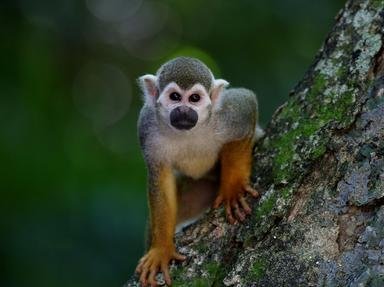With over 250 recognized species, monkeys are the biggest group in the order of primates. They are part of the infraorder known as
, or higher primates, which also includes
. Monkeys are divided into two groups:
monkeys, or Catarrhini, are tailless or nearly so, while
monkeys, or Platyrrhini, have long, often
tails. These mammals come in a wide range of sizes: the smallest species, the
, weighs just over 100 g (3.5 oz), while the largest, the
, can grow to a length of nearly 1 m (3.3 ft), and weigh up to 36 kg (79 lb).
Most monkeys live in
regions, in particular
areas such as the Amazon basin, Central Africa and Southeast Asia. However, some species are found in temperate environments, such as
, one of the southernmost points of continental Europe, or the islands of
. Forest-dwelling monkeys are usually
, while savannah or mountain dwellers tend to live on the ground. Like other primates, monkeys are generally
, though many species favour a mainly
diet.
Some of the common names by which monkeys are known refer to some distinctive feature of a given species. For instance, the endangered
monkey owes its name to its disproportionately long limbs and tail. The nocturnal
monkey has the largest eyes of any monkey species, while the
monkey is widely regarded as the loudest land animal. Along with these three Central and South American species, there is the peculiar-looking
monkey of Borneo, named after its unusually large nose.
